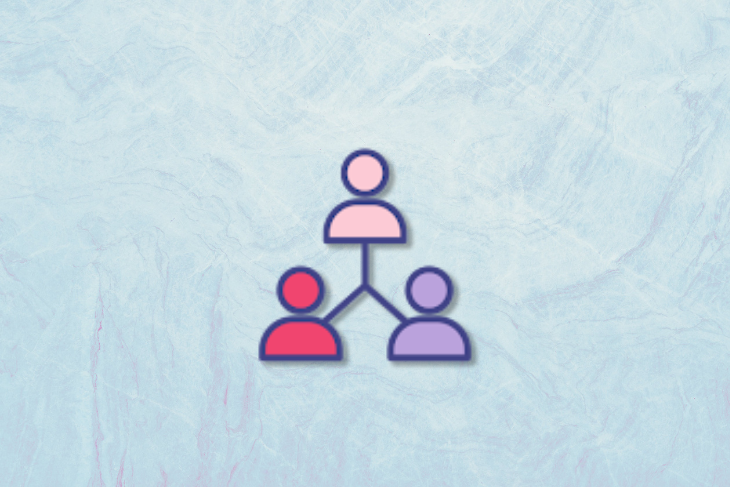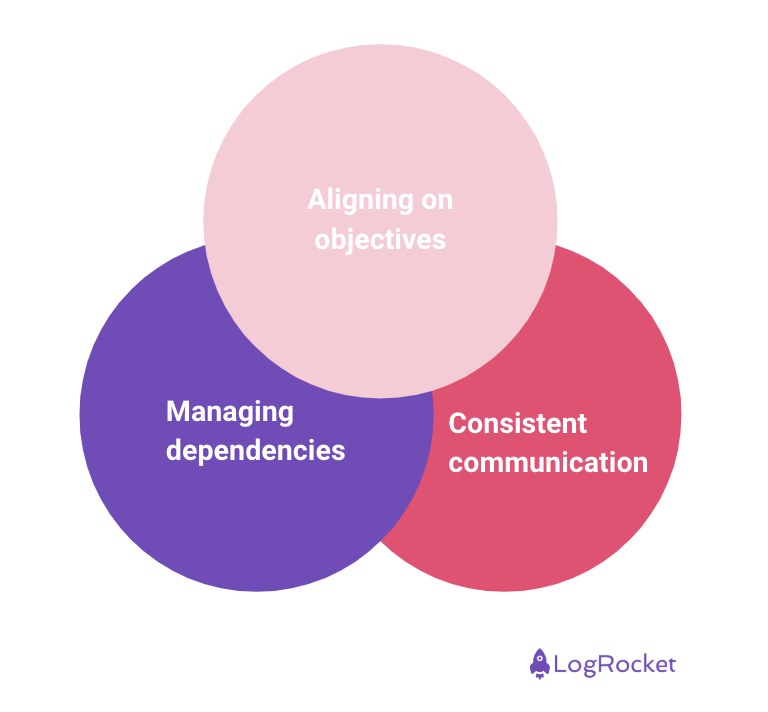
Product managers are often mislabeled and misunderstood. I would know best: One of my content creation pillars is making sure that the role is more clearly defined. Regardless of my reach though, organizations often mix up a product manager with a developer, designer, tech architect, and most often project manager.
Alongside these, program managers are also confused with product managers. While the role initially sounds the same and feels like a synonym (say, like an “app” or “platform” manager), it differs greatly from a product manager.
So, what are the differences? How can those two roles co-exist in the same organization? How can they support one another? All that, and more, in today’s piece!
A program manager oversees a collection of related projects, ensuring they align with broader strategic business objectives and progress effectively with the right teams and stakeholders. Their work is less about the day-to-day execution of individual tasks and more about the big picture, managing how various projects interconnect and contribute to overarching goals.
A good analogy is when you picture an old-time phone operator in front of the switchboard. Program managers have an eagle-eye view of all the connections and know what to connect to in order to get the call (the complicated project) going.
The key responsibilities a program manager is responsible for include:
A product manager (PM) leads a product that solves a problem by leveraging a team of talented individuals and technology in order to deliver value. They mostly focus on goals and selecting problems to fix (and their order), which usually extends to working on their solution with the dev team.
A product manager’s responsibilities differ from a program manager. The most important ones are:
While both roles are essential for organizational success, they contribute to it in different ways. Program managers operate at a higher strategic level, overseeing multiple interconnected projects to ensure they align with broader business objectives and are executed efficiently. They track metrics like project completion rates, cost efficiency, and overall impact, leveraging skills in strategic planning, risk management, and cross-team coordination.
In contrast, product managers concentrate on the lifecycle of a single product or feature, prioritizing user-focused solutions that enhance customer satisfaction and drive business value. Their success is measured through metrics like user adoption, engagement, and feature performance, requiring strong skills in user empathy, product design thinking, and roadmap prioritization. Together, these roles complement each other, balancing strategic alignment with user-centric innovation.
PMs can work in the smallest organizations (even a few people start-ups), but program managers only exist in medium-to-large companies, where the complexities are so great and confusing that you need a dedicated person to make sure everyone can navigate the org chart (in search of project dependencies and partners) effectively. Having program managers also helps create streamlined, focused reporting for high-level management, giving time back to product managers who would otherwise have to create and coordinate that reporting process themselves.
The relationship between these two roles is a partnership of alignment and coordination. Here’s how they complement each other:

Program managers ensure that product initiatives fit within the broader strategic framework. Product managers, in turn, focus on aligning their products with user needs and business goals. Thus, a PM may need to check with a program manager if an idea fits the overall direction or assign that idea to a specific goal. This way the program manager can later accurately report it upstairs.
Program managers coordinate efforts between multiple product managers to handle interdependencies and ensure smooth execution. As a result, the PM can contact the other person to identify teams that they need to work with in order to successfully complete an initiative.
Both roles rely on transparent communication to manage expectations, share updates, and keep stakeholders informed. This might come down to a call where a PM works on a project coordinated by a program manager in order to keep things going smoothly. It’s also likely that product management software (i.g., Jira) will report everything that the program manager needs.
As the two positions are vastly different, they only cross when needed. As long as there’s mutual respect and understanding, everything should work out just fine.
While program managers and product managers have distinct responsibilities, their collaboration, even though it only happens when needed, benefits everyone in the loop. Program managers drive alignment across initiatives to ensure strategic goals are met, while product managers focus on creating user-centric solutions that deliver tangible value. All that is in the name of achieving and tracking organization-wide goals.
Hopefully, any confusion you had with the two similarly sounding roles has now been cleared and if you encounter either a product or program manager in your new job, you’ll know what to expect. In the meantime, come back soon for the next blog post release. Thank you for reading!
Featured image source: IconScout

LogRocket identifies friction points in the user experience so you can make informed decisions about product and design changes that must happen to hit your goals.
With LogRocket, you can understand the scope of the issues affecting your product and prioritize the changes that need to be made. LogRocket simplifies workflows by allowing Engineering, Product, UX, and Design teams to work from the same data as you, eliminating any confusion about what needs to be done.
Get your teams on the same page — try LogRocket today.

A practical framework for PMs to use AI in ideation without sacrificing judgment, strategy, or decision quality.

A practical five minute revenue estimation method to help product managers compare ideas, drop low impact features, and prioritize smarter.

A practical guide for PMs who want to stop being bottlenecks, delegate smarter, and lead teams effectively with a clear ownership framework.

Stop letting unreliable data block features. Treat data as inventory to track quality, ownership, and ship with confidence.